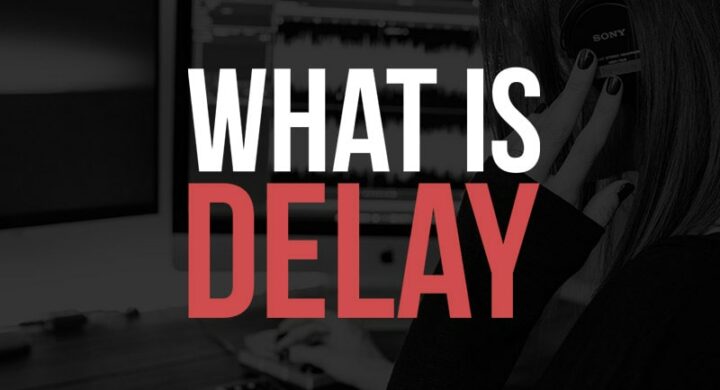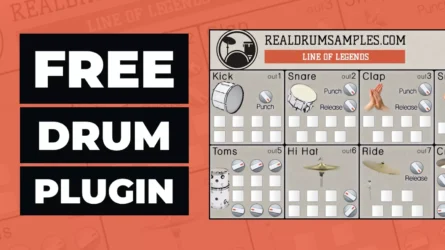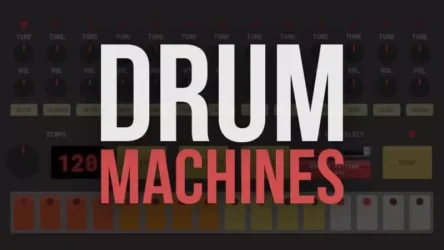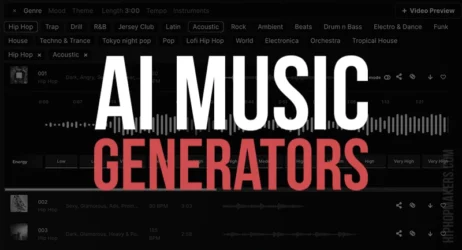This guide will answer what is a delay in music, the difference between delay and reverb, examples of delay, and other common questions.
- What Is A Delay Effect
- Reverb vs. Delay
- Examples Of Delay In Music
- Types Of Delay In Music
- How Do You Use Delay
- What Is The Use Of Delay
- Is Delay The Same As Echo
- What Does Delay Do To Vocals
What Is A Delay Effect?
Delay gives an echo effect to the sound you listen to. Delay is an audio signal processing technique where a copy of the original audio signal is created at a particular time interval after the original. The duration of this delay is what we call “delay time.”
Delay in music is important because it makes the sound more realistic, natural, and enjoyable.
Delay also creates what is called the “Haas effect.” The Haas effect makes the sound more spacious, but the difference in this gain is so slight that it isn’t noticeable to the average listener.

What Is The Purpose Of Delay?
Delay gives ambiance or depth to the sound. It makes the sound more real, natural, and enjoyable.
Another important use of delay is what it does for vocals, the “doubling effect.” The doubling effect gives you a thicker sound.
This technique is what you often will hear in a big recording studio where there is a “wall of sound.” The wall of sound plays a role in giving you a powerful or fuller sound.
Delay also plays a role in “stereo imaging.” This makes the sound more expansive, larger than what is actually there.
How Does Delay Work?
When an electrical audio signal enters a delay pedal, it is routed through a series of electronic circuits. The delay pedal sends the original audio signal to a circuit that creates a copy. This copy is then sent back into the pedal through another circuit.
The delay time can be measured in fractions of seconds, milliseconds (thousandths of a second). It is actually measured in multiples of the length of the delay time.
What Is The History Of Delay In Music?
Delay has been around since the early 20th century. One of the first claims to what we know as “delay” was the “Echoplex,” which Mike Battle invented in the ’50s.
Tape delay was the first delay type to be used in music. It was trendy during the ’60s. The idea of this delay is that you play a sound into a tape deck, and it goes through an actual physical recording process, where the sound gets recorded on the tape.
Delay had a major role in several music genres such as dub, reggae, and rock. The echo effect can be heard in music from all genres from the past century.
What Is The Difference Between Reverb And Delay?
Delay is closely related to reverb, but they are not the same. Reverb creates an ambiance effect for an instrument or a voice, while delay creates a doubling effect.
Reverb makes the sound more expansive and widens it out. Delay creates a more superior sound but is not as expansive.
Delay is used significantly in dub music to create a “wall of sound.” Reverb is not used as much in dub because it makes the sound more expansive, and the wall of sound does not require a spacious or open sound.
Reverb is more commonly used in music genres that are not focused on the wall of sound. Reverb gives a much larger, open, and expansive sound.
Delay is more commonly used in music genres that focus on the wall of sound. Delay gives a more profound, larger, and more realistic sound.
What Are Examples Of Delay In Music?
Delay can be heard in rock, hard rock, alternative music, metal, dubstep, electronic dance music. Let’s take a look at examples of delay being used in music.
A great example of delay in music is on The Beatles album Abbey Road. Just before the solo on “I Want You (She’s So Heavy),” there is an excellent example of “tape” delay. This is what gives the song a heavy, deep sound.
Another example of delay is on the U2 song “The Fly.” You can hear an example of a “tape” delay in the song. This is what gives the song an expansive sound.
Another example of delay is in the song “New Born” by Muse. You can hear an example of a “cross-channel” delay, which is a type of delay that creates a doubling effect.
Another example of delay in music is with The Prodigy’s band, specifically with their album The Fat Of The Land. This album is considered one of the most influential dub albums in music history. You can clearly hear an example of “tape” delay in the song “Firestarter.” This is what gives the song a deep and heavy sound.
Another example of delay in music is with the band Gorillaz. The song “Feel Good Inc” has an example of a “cross-channel” delay that is heard in the rap verse. This is what gives the song a deep and expansive sound.
What Are The Different Types Of Delay In Music?
Delay has evolved over time, and there are several different types of delay. The most common types of delay are tape, analog, and digital.
Tape Delay
One of the first delay devices is what we call tape delay. Tape delay used magnetic tape to record sound and then play it back after a pre-determined length of time. This is how Binson Echorec got its name because it used recordings on magnetic tape.
Analog Delay
The analog delay gives the sound a warm and rich tone. Analog delay is significant for giving you that vintage feel or that retro sound. It is not as precise as digital delay, but the tone is what makes it very popular.
Digital Delay
A digital delay is cleaner than analog delay, meaning it can often be more crisp and clear, commonly used in recording studios. The digital delay has also become more popular over the years because of its precision and ease of use.
How Do You Use Delay In Music Production?
Delay is very versatile in music production. It can be used to enhance the tone of an instrument, create a unique sound effect, or give a song a more exciting feel.
There are several ways to use delay in music production. Delay is most commonly used as a sound effect and a way to make a “space” within the song.
Use as a sound effect: Delay is used as a sound effect when used in different lengths of time, in opposition to the beat or rhythm of the song.
Use as a way to create space: Delay is used to create space within the song when it is constantly changing in short time lengths.
What Is The Use Of Delay?
Delay is used in music production to create a larger sound. When you record an instrument with no delay, it sounds small and insufficient. Delay makes the sound fuller and gives it a bigger impact.
Delay can also be used to create a unique sound effect. It is used in many different forms of music and can be manipulated to create interesting effects that are not typically found in a song.
Related: 35 Best Delay VST Plugins
Is Delay The Same As Echo?
Although there are many different types of delays and vary in sound and function drastically, the two terms “echo” and “delay” are used interchangeably.
Echo is simply a delayed version of the sound, whereas delay can be manipulated to create a specific sound effect.
The echo makes sounds bigger, but it does not have as much versatility as a delay. The echo has a more straightforward sound.
Delay gives the sound a lot of flexibility and can be manipulated to create different sounds that are not possible with echo.
What Does Delay Do To Vocals?
Delay is not always used on vocals, but when it is, it is mainly used to create space and give the vocals a unique effect.
When vocals are recorded without delay, they sound cluttered and packed together. This is because vocals naturally lack space and depth, making them sound small and insufficient.
Delay creates space within the vocals and gives them more depth. This can be done by adding echo or multiple delays that last shorter lengths of time.
Recommended Tools
Here are the most popular audio mixing products.
No products found.
Audio Delay Overview
Understanding how to maneuver delay can be transformative in the thrilling world of digital signal processing electronics. An input signal goes into the delay unit, and a delayed sound comes out, providing creative effects that can enhance the sound quality of your music production.
Delay times can be adjusted to your preference with the help of your favorite delay plugin, opening avenues for truly distinctive sounds in electronic music production.
The range of delay units, from analog delay units to digital delays, offers a vast palette of sound possibilities.
While digital delay effects tend to provide a clean, precise delay, analog delays carry a warmth and vintage character that some audio engineers prefer.
Each unit and plugin will have feedback controls that determine how many repeats the delay signal will have, affecting the delay tail in your mix. A short delay can add a doubling delay effect to thicken your sound, while a longer delay can create a distinct echo, even a chorus effect when used creatively.
The wet signal is the delayed effect that blends with the dry sound – the original, unprocessed signal. Fine-tuning the balance between these two is key to using delay effectively.
Delay plugins, including stereo delay and ping pong, can add depth and dimension, making your sound more lush and expansive. Notably, a synced delay can ensure the delayed sound is rhythmically coherent with your track, which is particularly helpful in electronic music production.
Delay techniques vary widely, from the straight delay effect, where each repeat of the sound is identical, to the chorus effects, where slight variations in the delay parameters create a sense of multiple sounds playing together.
Software plugins allow you to set delay time and feedback settings, allowing you to shape the delay feedback and mold your sound to your taste.
As an aspiring music producer, don’t be afraid to play around with delay plugins and other effects, such as reverb.
In fact, understanding the differences between them can enhance your production significantly. For instance, reverb tends to create a sense of space and environment, while delay provides a rhythmic repetition of sound.
Lastly, remember to use your delays creatively. Be it guitar effect or vocal treatment, the use of delay can help define your unique sound. It’s not just about how to set the delay or how to use a delay plug-in; it’s about how you use the tools to express your artistic vision.
Here are a few bonus tips: Start with a simple straight delay effect to understand the basics, gradually increase the delay times for more creative effects, and always trust your ears – if it sounds good, it probably is!
I hope you now have a good understanding of audio delay and how it applies to music production.




